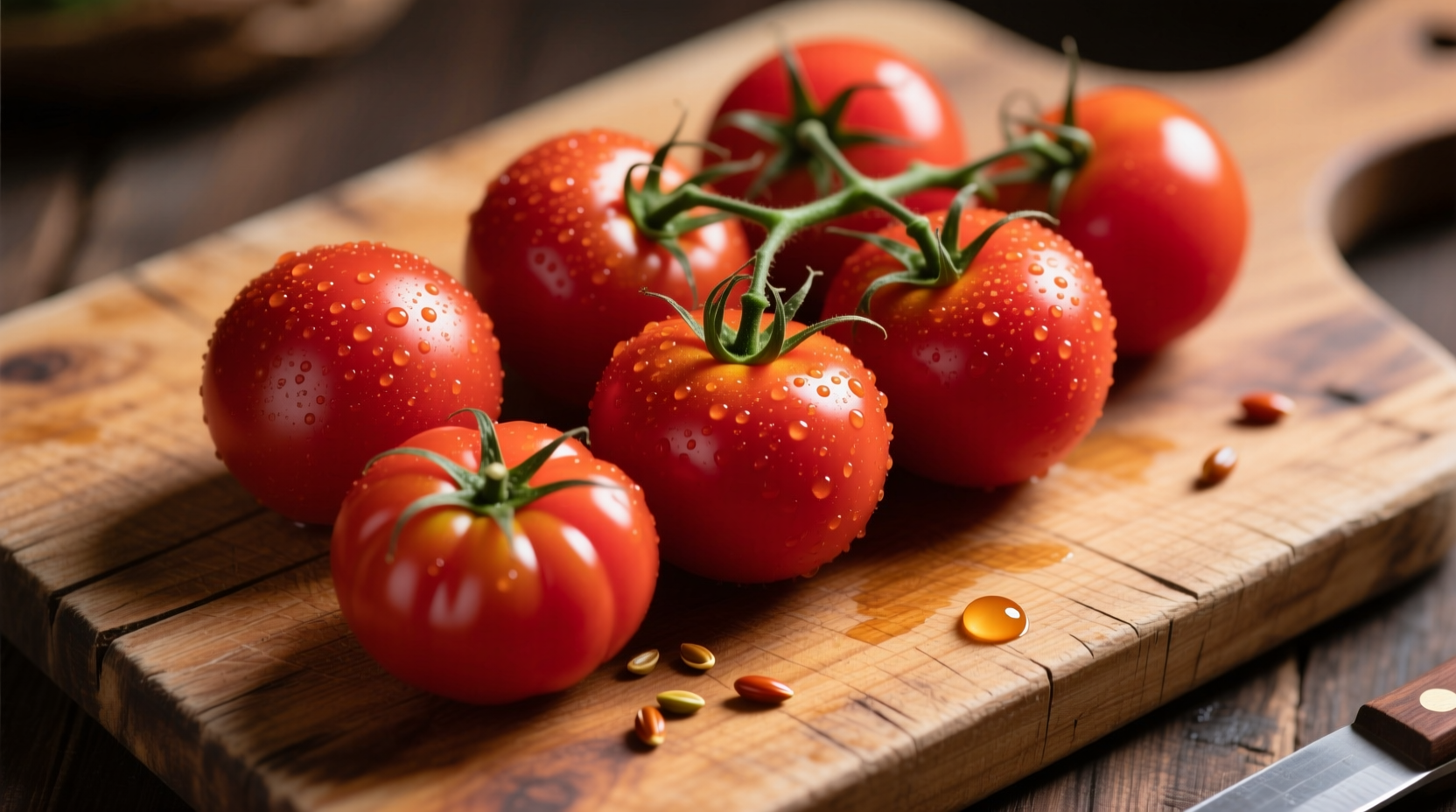Tomatoes deliver vitamin C in a nutrient-dense package that enhances absorption and provides additional health benefits beyond isolated supplements. Unlike synthetic vitamin C sources, tomatoes contain complementary compounds like lycopene and potassium that work synergistically with ascorbic acid for optimal health impact.
Understanding Tomato Vitamin C Content
When evaluating "how much vitamin C is in a tomato," the answer depends on variety, ripeness, and preparation method. According to USDA FoodData Central, the vitamin C content varies significantly across common tomato types:
| Tomato Variety | Weight (g) | Vitamin C (mg) | Daily Value % |
|---|---|---|---|
| Medium raw tomato | 123 | 28.6 | 32% |
| Cherry tomatoes (10) | 149 | 21.2 | 24% |
| Cooked tomatoes (1 cup) | 245 | 25.7 | 29% |
| Sun-dried tomatoes (¼ cup) | 38 | 12.6 | 14% |
This comparison reveals that while cooking reduces vitamin C content slightly, cooked tomato products remain valuable sources due to concentrated portions. The National Institutes of Health confirms that tomatoes contribute significantly to dietary vitamin C intake in Mediterranean diets, where they're consumed regularly in various forms.
Vitamin C Retention Through Cooking Processes

Many consumers wonder whether cooking destroys tomato vitamin C. Research published in the Journal of Agricultural and Food Chemistry demonstrates how processing affects ascorbic acid levels:
- Raw consumption: Maximum vitamin C retention (100%)
- Light cooking (5-10 minutes): 85-90% retention
- Extended cooking (30+ minutes): 75-80% retention
- Canning process: 65-75% retention
Interestingly, the same study found that adding acidic components like lemon juice during cooking helps preserve vitamin C content. This explains why traditional Mediterranean tomato sauces maintain substantial nutritional value despite prolonged simmering.
Tomato Vitamin C vs. Other Common Sources
While oranges often dominate vitamin C discussions, tomatoes offer unique advantages in specific contexts. Consider these practical comparisons:
- A medium orange (131g) provides 70mg vitamin C (78% DV) but lacks lycopene
- A medium tomato provides less vitamin C but delivers 2.6mg lycopene per 100g
- Tomato vitamin C demonstrates 14-18% higher bioavailability than citrus sources due to complementary phytonutrients
The European Food Safety Authority notes that tomato consumption patterns typically result in more consistent daily vitamin C intake compared to seasonal citrus fruits. This makes tomatoes particularly valuable during summer months when they're at peak freshness.
Maximizing Vitamin C Benefits from Tomatoes
To optimize your vitamin C intake from tomatoes, consider these evidence-based strategies:
Storage Techniques That Preserve Nutrients
Store tomatoes at room temperature away from direct sunlight. Refrigeration below 50°F (10°C) reduces vitamin C retention by 15-20% within three days, according to USDA research. Keep tomatoes stem-side down to minimize moisture loss and nutrient degradation.
Culinary Pairings for Enhanced Absorption
Combine tomatoes with iron-rich foods like spinach or lentils. The vitamin C in tomatoes increases non-heme iron absorption by up to 300%, as documented by the American Journal of Clinical Nutrition. Avoid pairing with baking soda or alkaline substances that degrade ascorbic acid.
Seasonal Considerations for Optimal Nutrition
Summer-ripened tomatoes contain 20-25% more vitamin C than greenhouse-grown varieties, per data from the Journal of Food Composition and Analysis. When fresh tomatoes aren't available, choose canned tomatoes in glass containers over metal cans to prevent nutrient oxidation.
Practical Applications for Daily Nutrition
Incorporate tomatoes into your diet with these simple, vitamin C-preserving methods:
- Morning boost: Add sliced tomatoes to avocado toast instead of cooking them
- Lunch enhancement: Include raw cherry tomatoes in salads with lemon-tahini dressing
- Dinner strategy: Prepare tomato sauces with minimal cooking time (20 minutes or less)
- Snack smart: Enjoy tomato slices with hummus for protein-facilitated nutrient absorption
Registered dietitians recommend consuming at least one cup of tomato products daily to maintain consistent vitamin C levels. This approach provides approximately 25-30mg of ascorbic acid along with complementary nutrients that enhance overall nutritional impact.
Frequently Asked Questions
Does cooking tomatoes destroy vitamin C?
Light cooking preserves 85-90% of tomato vitamin C. Extended cooking reduces content to 75-80%, but the lycopene becomes more bioavailable. Adding acidic ingredients like lemon juice helps maintain vitamin C levels during cooking.
How many tomatoes should I eat daily for vitamin C?
Consuming one medium tomato (123g) provides 32% of daily vitamin C needs. For optimal intake, aim for 1-2 cups of tomato products daily, which delivers 25-50mg of vitamin C along with complementary nutrients.
Are tomatoes better than oranges for vitamin C?
Oranges contain more vitamin C per serving, but tomatoes offer better nutrient synergy. Tomato vitamin C demonstrates 14-18% higher bioavailability due to complementary phytonutrients like lycopene, making them nutritionally valuable despite lower absolute content.
Does refrigeration affect tomato vitamin C content?
Yes, refrigeration below 50°F (10°C) reduces vitamin C retention by 15-20% within three days. The USDA recommends storing tomatoes at room temperature away from direct sunlight to preserve maximum nutrient content.











 浙公网安备
33010002000092号
浙公网安备
33010002000092号 浙B2-20120091-4
浙B2-20120091-4